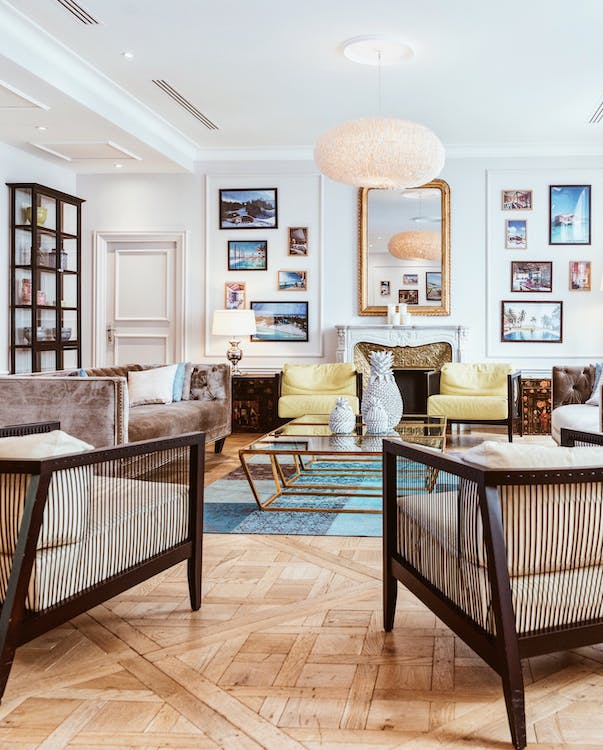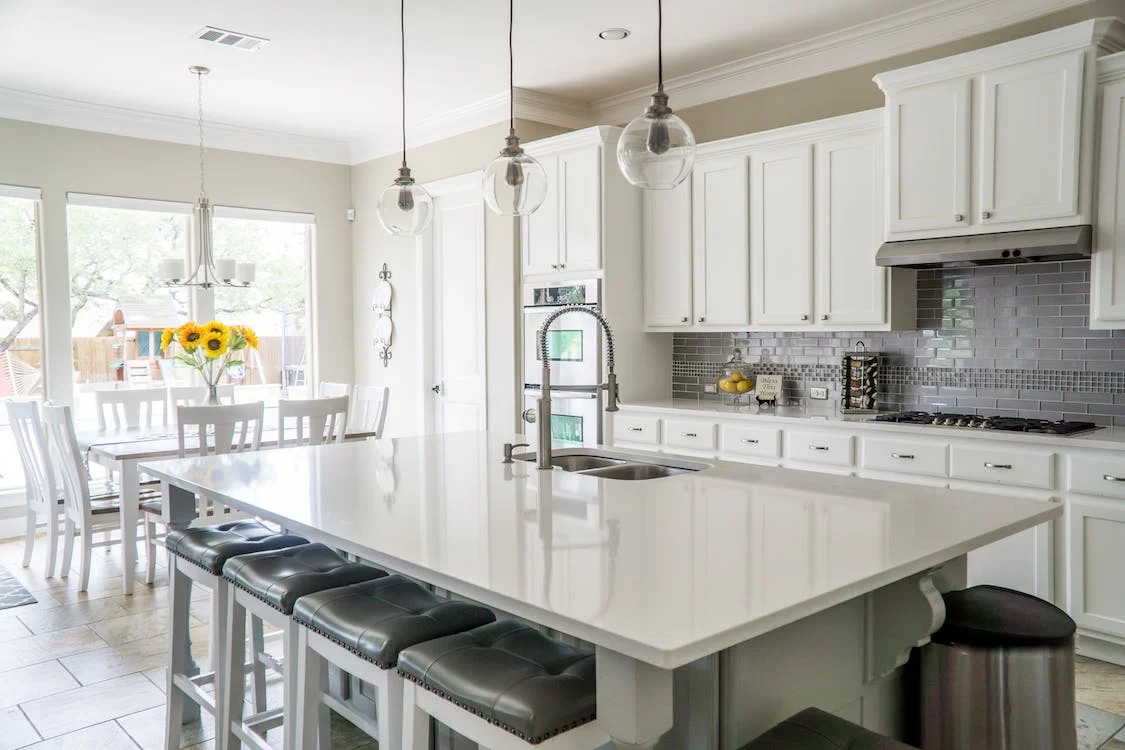In a minimalist interior, less is better. It’s about creating a space that is simple and functional, with less visual noise, less color and, of course, less stuff. It’s about focusing on a handful of items that you really need and love rather than keeping a lot of different items you don’t need. For others who will see it as stark, cold and boring; to minimalists, it’s just simple, sleek and sexy.
The minimalist style of decorating goes beyond home design and into a lifestyle. It restrains you in buying objects that you don’t really need, and let space, lighting and minimal objects play important roles in your interiors.
It may sometimes seem like it’s only perfect for people who are never home, like bachelors/bachelorettes who work all day, but just about anyone can achieve this look. But of course, perhaps it won’t work with those who have a hard time letting go of things they used to love, those who love strutting all their stuff into a display, and also those who have small mischievous kids in their home.
But if the minimalist style suits you, don’t waste time and start trying to adapt it in your home. Here are some tips and tricks on how to do it:
1. Declutter
Minimalism is about going back to the bare essentials, and it starts with clearing away the clutter. Stick to what you really need. This will open an opportunity for you to donate, give away or sell your other items. Show only a few well-chosen elements (some things that you need regularly) on display at the top of your coffee table or countertops and store the rest of your stuff in cabinets and cupboards. Look for opportunities to scale down further, like swapping the gallery wall for only one big piece of art.
2. Adapt fewer items
When decorating a minimalist interior, you have to think about what’s the bare minimum about of furniture and accessories you can keep to maintain an optimum level of livability. It doesn’t mean you have to stick to just chairs without a place to prop your feet – you can still get an ottoman if you really need one. Just remember to keep your choices of furnishing tailored.
3. Keep furnishings simple
Stick to furniture pieces with sleek, stripped-down profiles, clean lines and little to no ornamentation. The heavy curves, carvings and detailing common to traditional furniture are a big no-no for minimalists. However, it doesn’t mean that you stick with modernistic designs – classics like French campaign beds, Windsor chairs and shaker armoires, and other timeless pieces are very much welcome.
For your cabinets, look for those with very simple design and unadorned hardware. Opt for natural materials as much as possible. It’s best to stick to furniture in their natural color (like brown, if the material is wood), but you can also adapt something colored or painted, as long as it doesn’t overpower the space.
4. Use a limited color palette
While we’re on the subject of colors, minimalist interiors limit the choices of colors used. A room bursting with color creates a lot of visual activity, which negates the purpose of minimalism. Traditionally, minimalist interiors rely on neutrals and monochromatic palettes, such as grays, whites, creams, light browns, khaki, and light pastels like barely-there blues, greens, pinks, yellows and lavenders; and then grounded by a touch of black or espresso brown. You can add brighter colors as accents, but stick to one or two colors only and limit the dosage.
5. Keep storage concealed and neat
No house will be considered homey and functional if there’s not plenty of storage to accommodate every person’s many belongings in the house. And minimalist interiors are not an exception to this. For every minimalist home, you see you might wonder, “Where is all their stuff?” Their secret is hidden storage.
Committing to the bare minimum essentials means there’s a home for every item, this is why decluttering is important. Now, to adapt a minimalistic style, you have to put these items behind innocuous storage, like a closed door, a drawer, or behind the mirror door of your closet. If there’s still not enough storage, don’t be afraid to add more pieces of furniture or organizational systems, because reducing visual clutter and making sure everything stays contained are what’s more important.
It doesn’t mean that you have to conceal your open shelving or leave it there unfilled. Just remove other items sensibly and keep them in a more concealed storage. Display a small stack of books (those that needs to be handy), and remove all decorations except one or two vases, framed photos, or art pieces.
6. Let the sunlight in
Minimalist interiors must feel light and airy because of all the natural light that brightens up space. Because of this, bare windows are your friend. It’s obvious that all those fussy draperies have no space in a minimalist interior. Keep your windows unadorned to let the simple architecture of the window and the view outside steal the scene. If your privacy is an issue, consider textured glass for your windows or use a translucent film to screen out onlookers. But if you can’t bear leaving your windows naked, make it as elemental and as neutral as possible.
7. Incorporate subtle patterns
When you think of minimalist interiors, you probably think of a room with straight furniture with solid colors. You can still incorporate patterns to break away the monotony and keep the space looking interesting. However, you should limit patterns and stick to small-scale or tone-on-tone ones. For instance, a bedroom with a sleek white bed frame with white wall bricks can use a pattern using a gray rug with a deep pile, and a quilted gray blanket to add depth. If you want to add prints, use it the way you would use an accent piece.
8. Allow plenty of open space
The minimalist style boasts of its restful appeal, so wide open spaces and unobstructed sight lines are important elements that you shouldn’t overlook. If the existing architecture of your home doesn’t follow these elements, you can consider minor to major remodeling (depending on your time and budget) to streamline the flow of space. But if you have no liberty nor money to do this, you can fake it by creating an impression of openness, such as by painting all your walls, trim and ceiling with the same color.
If you already have an open space, don’t get tempted to fill it with furniture just because there’s space to do so. Relax in the expanse, as it defines your interior as minimalistic.
9. Add some texture
Since you’ll be restricted with a handful of color choices and design elements, it’s important that every item and fixture serves double duty in terms of functionality and aesthetics. Adding texture makes all the difference to add visual weight and depth, as well as to prevent monotony. You can offer texture by adding a variety of materials like glass, timber, brick, cloth, canvas, faux fur or natural fibers like sisal. For instance, in a bathroom restricted with the colors blue, white and brown, you can add some texture by having a half-brick accent wall that amplifies the simple white sinks.
10. Add accent elements
You need a bit of decoration to keep a house looking homey and interesting, including minimalist homes. The rule is to keep them as accents and not go overboard. As the style’s name suggests, keep it minimal. For instance, you can add a work of art in a contrasting color of the overall palette of the room, or place simple greenery in the corner of a neutral room to bring some life.
11. Let the views be a highlight
Minimalist interiors work best in a house built in an area with outstanding views. If you do, you can easily scale back in your indoor space because you can have a beautiful focal point in the great outdoors. Since you’ll be adapting bare windows to let light in, it’s best if it can give you a relaxing view as well. Whether you live in the suburbs, the city, the highlands or the seaside, seize the views and make it highlighted.
12. Let lights double as décor
Always, always opt for lighting fixtures that are beautiful. Fancy chandeliers may not look minimalist, but other pretty fixtures like hanging drop lights and pendant lights work well. You can also go for lighting fixtures that add an effect, like those that give off accent colors other than white.




